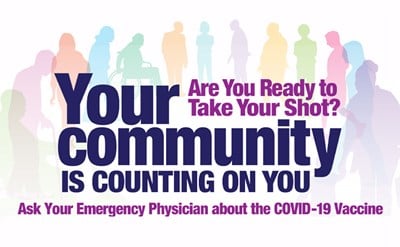WASHINGTON, D.C.—March is Brain Injury Awareness Month and while some head injuries may seem mild at first, recognizing the signs of a brain injury, and knowing when to go to the emergency department, could save a life, according to the American College of Emergency Physicians (ACEP).
“The brain is the body’s command center,” said Gillian Schmitz, MD, FACEP, president of ACEP. “One of the smartest ways to protect it is to be able to spot the signs of a brain injury and to go to the closest emergency department when you need medical attention.”
Brain injuries affect more than 2.8 million people each year, according to the Brain Injury Association of America, and they are a leading cause of injury-related deaths. A traumatic brain injury (TBI) is a brain injury that disrupts brain function and the most common form of TBI is a concussion.
A concussion can result from a fall, recreational injury, motor vehicle accident, or an incident at home. Concussions can be particularly prevalent among adolescents participating in sports, but these injuries are not limited to athletes or adventurers. A bump, blow, or jolt to the head can happen anywhere and affect anyone at any age. Seek emergency care if you notice any of these signs of severe head injury:
- Headaches that worsen despite over-the-counter medications
- Weakness, numbness, or decreased coordination
- Slurred speech, or trouble walking
- Increased confusion or agitation
- Repeated vomiting
- Loss of consciousness for more than one minute
- Unequal pupil sizes
- Convulsions or seizures
- Unusual changes in sleep patterns or mood
While some symptoms of a concussion can be delayed hours or days, ignoring the signs of a brain injury can put anyone at risk of complications. Signs of confusion or disorientation are likely indicators that a head injury has occurred, and anyone who appears unsteady needs immediate medical attention. With an infant or young child, seek emergency care if the child:
- Exhibits any of the danger signs listed for adults
- Won’t stop crying, refuses to eat or nurse, or cannot be consoled
- Exhibits bulging in the soft spot on the front of the head (for an infant)
- Shows any sign of skull trauma or abnormality, such as bruising on the scalp or a depressed area where an injury occurred
Caretakers should note that vomiting is common in young children. Medical attention for a suspected head injury may only be necessary if a child vomits repeatedly in a short period of time (more than once or twice within an hour).
During an emergency visit, a physician may test to evaluate thinking, memory, and concentration. Brain imaging may be recommended to check for bleeding or swelling in the skull. Once a patient is ready to return home, a physician will outline a recovery plan that includes physical and mental rest before easing back to daily activities. Some blood thinning medications are associated with increased risk of brain bleeding after a head injury.
“The two easiest ways for anyone to avoid a concussion are to wear protective equipment during recreational activities and eliminate the hazards that can cause falls at home,” said Dr. Schmitz. “Head injuries can seem scary, but most are mild—prompt medical attention from an emergency physician can make all the difference.”
 American College of Emergency Physicians
American College of Emergency Physicians







